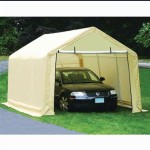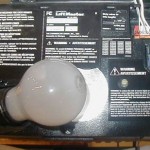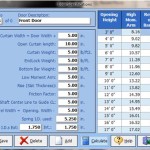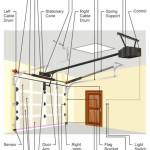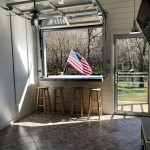Installing A Mini Split System in Your Garage: A Comprehensive Guide
Converting a garage into a functional workspace, gym, or hobby area requires proper climate control. A mini split system, also known as a ductless mini-split, offers an efficient and flexible solution for heating and cooling a garage space. Unlike window units, mini-splits provide more consistent temperature regulation and are less prone to security breaches. Unlike traditional HVAC systems, they do not require extensive ductwork, making them ideal for garages that lack existing duct infrastructure. This article provides a detailed guide to installing a mini-split system in a garage, covering essential considerations, necessary tools, and step-by-step instructions.
Before commencing any installation, it is crucial to assess the garage's specific needs and limitations. This involves determining the appropriate unit size, selecting a suitable location, and ensuring the electrical system can accommodate the new equipment. Neglecting these preliminary steps can lead to inefficient operation, system failures, and potential safety hazards.
1. Determining the Appropriate Unit Size and Type
Selecting the correct BTU (British Thermal Unit) rating for the mini-split is vital for optimal performance. An undersized unit will struggle to effectively heat or cool the space, while an oversized unit can cycle on and off frequently, leading to energy waste and temperature fluctuations. Several factors influence the required BTU rating, including the garage's size, insulation level, window area, and exposure to sunlight.
A general rule of thumb is to calculate approximately 20 BTU per square foot for a well-insulated garage. For example, a 400-square-foot garage would require an 8,000 BTU unit. However, this is merely an estimate. Garages with poor insulation, large windows, or significant sun exposure may require a higher BTU rating. Consulting with a qualified HVAC technician is recommended to conduct a thorough assessment and determine the precise BTU requirements for the specific garage. These professionals can consider factors such as ceiling height, local climate conditions, and the intended use of the garage.
Beyond BTU rating, consider the type of mini-split system. Single-zone systems are suitable for garages that require heating and cooling in a single, open space. Multi-zone systems, which connect multiple indoor units to a single outdoor unit, are more appropriate for garages that have partitioned areas or require independent temperature control in different zones. While multi-zone systems offer greater flexibility, they are typically more expensive to install and maintain.
Another critical factor is the unit's energy efficiency, measured by its SEER (Seasonal Energy Efficiency Ratio) rating for cooling and HSPF (Heating Seasonal Performance Factor) rating for heating. Higher SEER and HSPF ratings indicate greater energy efficiency, resulting in lower operating costs over the long term. Look for units with Energy Star certification to ensure they meet specific energy efficiency standards.
2. Preparing the Garage and Gathering Necessary Tools
Before installing the mini-split system, thoroughly prepare the garage. This involves cleaning the area, ensuring adequate workspace, and verifying the structural integrity of the wall where the indoor unit will be mounted. Remove any obstructions that may interfere with the installation process or airflow. Protecting the floor with drop cloths or similar materials can prevent damage during the installation process.
A comprehensive toolkit is essential for a successful mini-split installation. The following tools are commonly required:
- Stud Finder: Locates wall studs for secure mounting of the indoor unit.
- Drill with Various Bits: For drilling pilot holes, mounting brackets, and creating a hole for refrigerant lines.
- Level: Ensures the indoor unit is mounted horizontally for proper drainage.
- Screwdrivers (Phillips and Flathead): For securing screws and fasteners.
- Wrench Set: For tightening refrigerant line connections.
- Vacuum Pump: Evacuates air and moisture from the refrigerant lines.
- Manifold Gauge Set: Measures refrigerant pressure during evacuation and charging.
- Refrigerant Leak Detector: Detects refrigerant leaks after installation.
- Wire Strippers and Crimpers: For electrical connections.
- Multimeter: Verifies voltage and continuity of electrical circuits.
- Tape Measure: For accurate measurements.
- Utility Knife: For cutting insulation and other materials.
- Safety Glasses and Gloves: Personal protective equipment for safety.
In addition to these tools, ensure that you have the necessary installation accessories, such as mounting brackets, refrigerant lines, electrical wiring, and condensate drain hose. These components are typically included with the mini-split system, but it is crucial to verify their presence and compatibility before starting the installation.
3. Step-by-Step Installation Process
The installation process involves mounting the indoor and outdoor units, connecting the refrigerant lines and electrical wiring, and testing the system's functionality. It is crucial to follow the manufacturer's instructions carefully to ensure a safe and effective installation. Incorrect installation can void the warranty and potentially damage the equipment.
A. Mounting the Indoor Unit:
1. Use a stud finder to locate two wall studs that provide adequate support for the mounting bracket. The mounting location should allow for unobstructed airflow and sufficient clearance for maintenance.
2. Attach the mounting bracket to the wall studs using appropriate screws, ensuring it is level. A level bracket is crucial to prevent condensate from overflowing from the unit.
3. Carefully lift the indoor unit and slide it onto the mounting bracket, ensuring it is securely attached.
B. Mounting the Outdoor Unit:
1. Select a location for the outdoor unit that provides adequate ventilation and is protected from direct sunlight and extreme weather conditions. The location should also be easily accessible for maintenance and repairs.
2. The outdoor unit can be mounted on a concrete pad, wall-mounted brackets, or a dedicated stand. Ensure the chosen mounting method is level and stable.
3. Secure the outdoor unit to the mounting surface using appropriate bolts and screws.
C. Connecting Refrigerant Lines:
1. Drill a hole through the wall connecting the indoor and outdoor units. The hole should be large enough to accommodate the refrigerant lines, condensate drain hose, and electrical wiring. Protect the edges of the hole with a grommet to prevent damage to these components.
2. Connect the refrigerant lines to the indoor and outdoor units, ensuring the connections are tight and leak-proof. Use a wrench to tighten the flare fittings. It is critical to avoid over-tightening, which could damage the fittings. Follow the manufacturer's specifications for torque values.
3. Connect the condensate drain hose to the indoor unit and route it to a suitable drainage location. Ensure the hose is sloped downward to allow for proper drainage. Avoid creating any sags or loops in the hose, as this can impede drainage and lead to water damage.
D. Electrical Connections:
1. Turn off the power to the circuit breaker that will supply electricity to the mini-split system. Verify the power is off using a non-contact voltage tester.
2. Connect the electrical wiring to the indoor and outdoor units, following the wiring diagram provided by the manufacturer. Ensure all connections are secure and properly insulated. Use wire connectors to ensure secure and safe connections.
3. Ground the units according to local electrical codes.
E. Evacuating and Charging the Refrigerant Lines:
1. Connect a vacuum pump to the service ports on the outdoor unit. Use a manifold gauge set to monitor the pressure during evacuation.
2. Evacuate the air and moisture from the refrigerant lines until the pressure reaches the manufacturer's specified level. This process is crucial to prevent moisture from damaging the compressor.
3. Once the lines are evacuated, close the service valves and disconnect the vacuum pump. Use a refrigerant leak detector to check for any leaks in the refrigerant line connections. Repair any leaks before proceeding.
4. Release the refrigerant into the system by opening the service valves. Follow the manufacturer's instructions for the proper charging procedure.
F. Testing the System:
1. Turn on the power to the circuit breaker.
2. Turn on the mini-split system and verify that it is heating or cooling correctly.
3. Check for proper airflow and temperature regulation.
4. Monitor the system for any unusual noises or vibrations.
Installing a mini-split system in a garage is a complex task that requires careful planning, preparation, and execution. While this guide provides a comprehensive overview of the installation process, it is recommended to consult with a qualified HVAC technician for professional assistance. A professional installation ensures optimal performance, safety, and compliance with local building codes. Furthermore, improper installation can void the manufacturer's warranty, leading to costly repairs in the future.

Why Installing A Mini Split For Garage Is Good Idea

Upgrade Your Garage In Henderson With Ductless Mini Split Ac Installation

Ductless Mini Split Install In My Garage Ac Heating System

10 Benefits Of A Garage Mini Split Heatwave Heating Cooling

What I Learned In Mini Split Installation The Garage Journal

Installing A Diy Mini Split In Garage Youtube

How Much Does It Cost To Install A Mini Split Unit In Garage

How To Install A Mini Split In Your Garage Step By

How To Install A Diy Mini Split In Workshop Garage Or House Mr Cool 2024
Mini Split In Garage That Has A Vent Bogleheads Org
See Also

